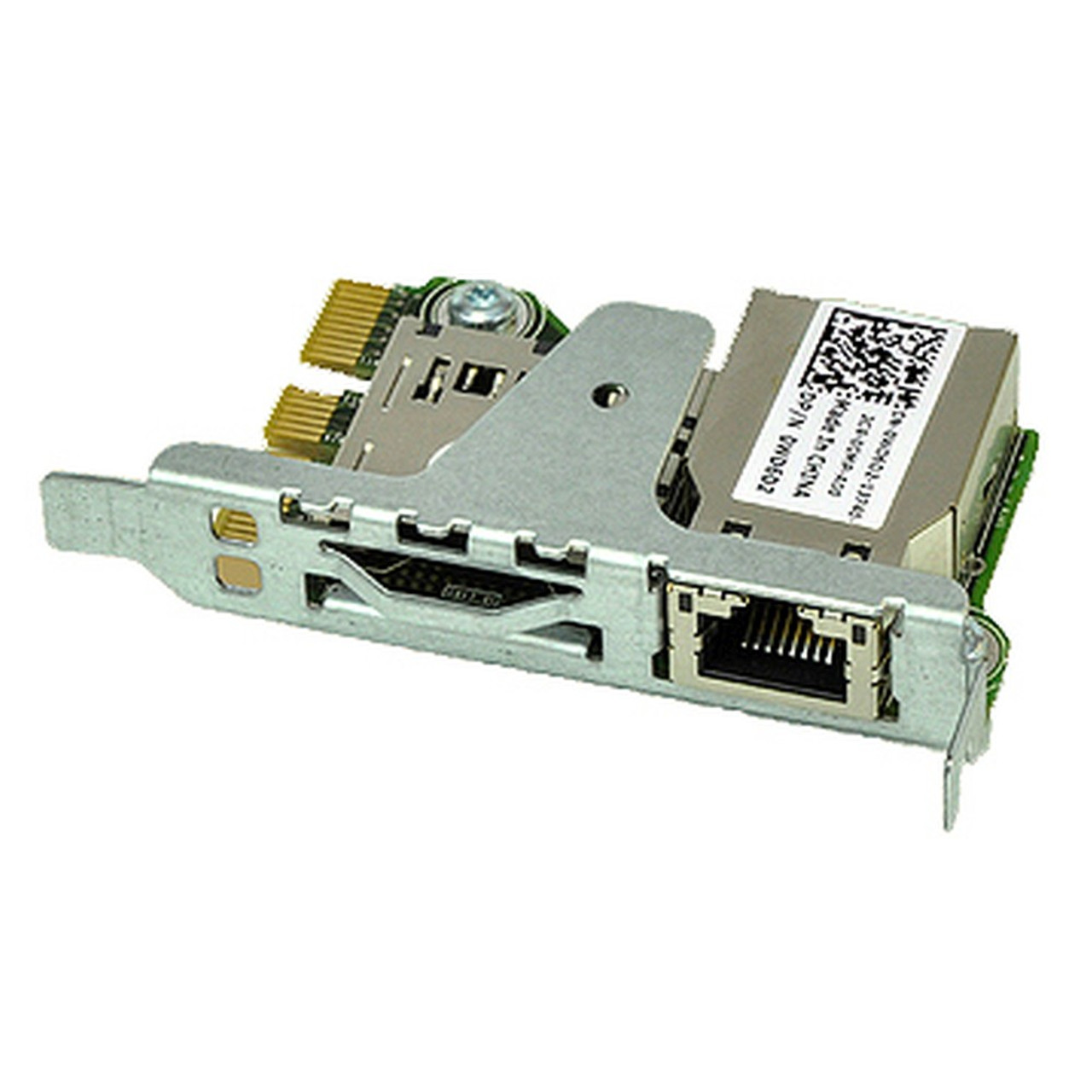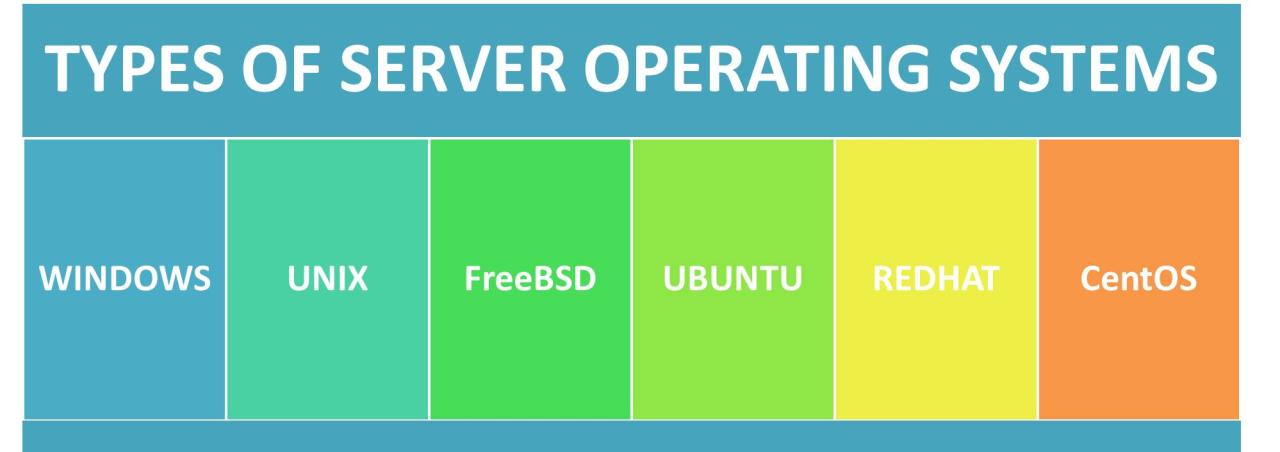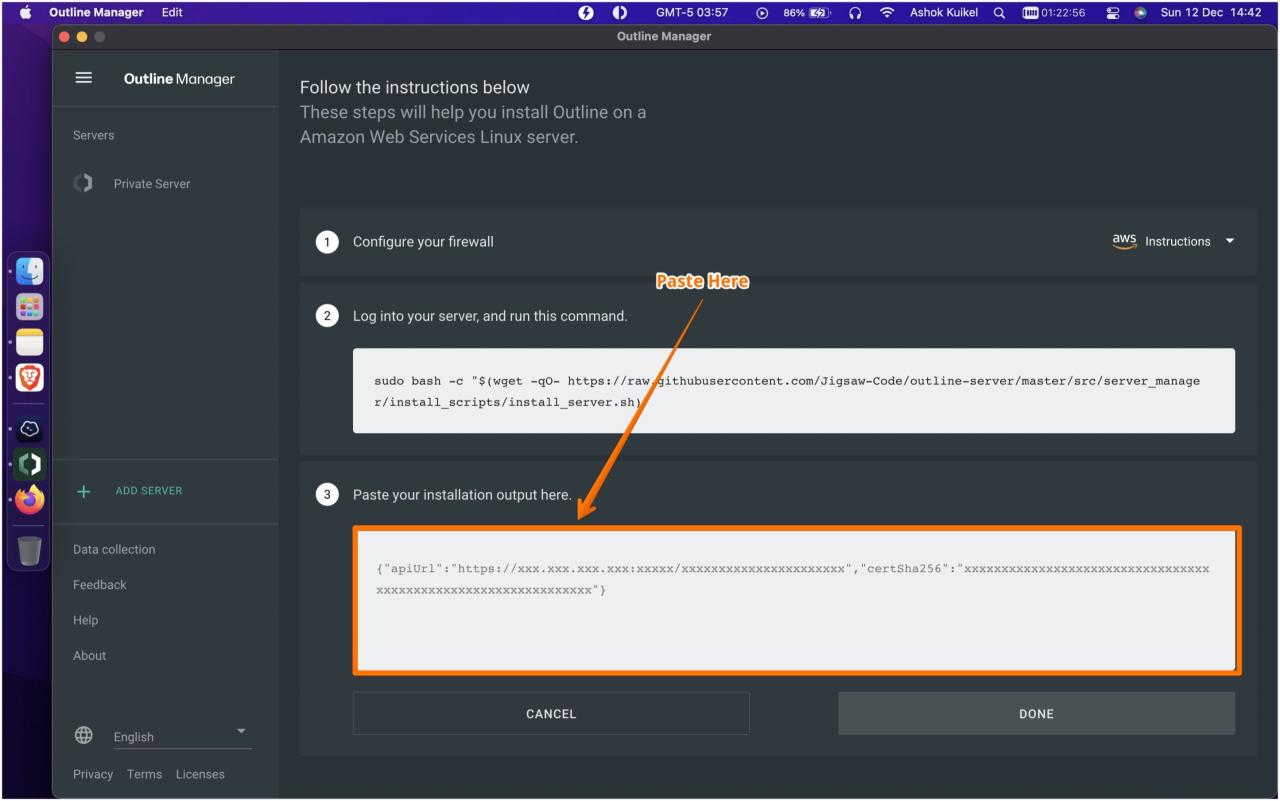Supermicro servers stand as a testament to innovation in the realm of computing, offering a compelling blend of performance, reliability, and efficiency. From their humble beginnings, Supermicro has emerged as a leading provider of server solutions, catering to a diverse range of industries and applications.
This comprehensive guide delves into the world of Supermicro servers, exploring their history, architecture, features, applications, and competitive landscape. We’ll examine the key components that drive their performance, the software and management tools that enhance their usability, and the real-world applications that demonstrate their impact.
Supermicro Server Overview
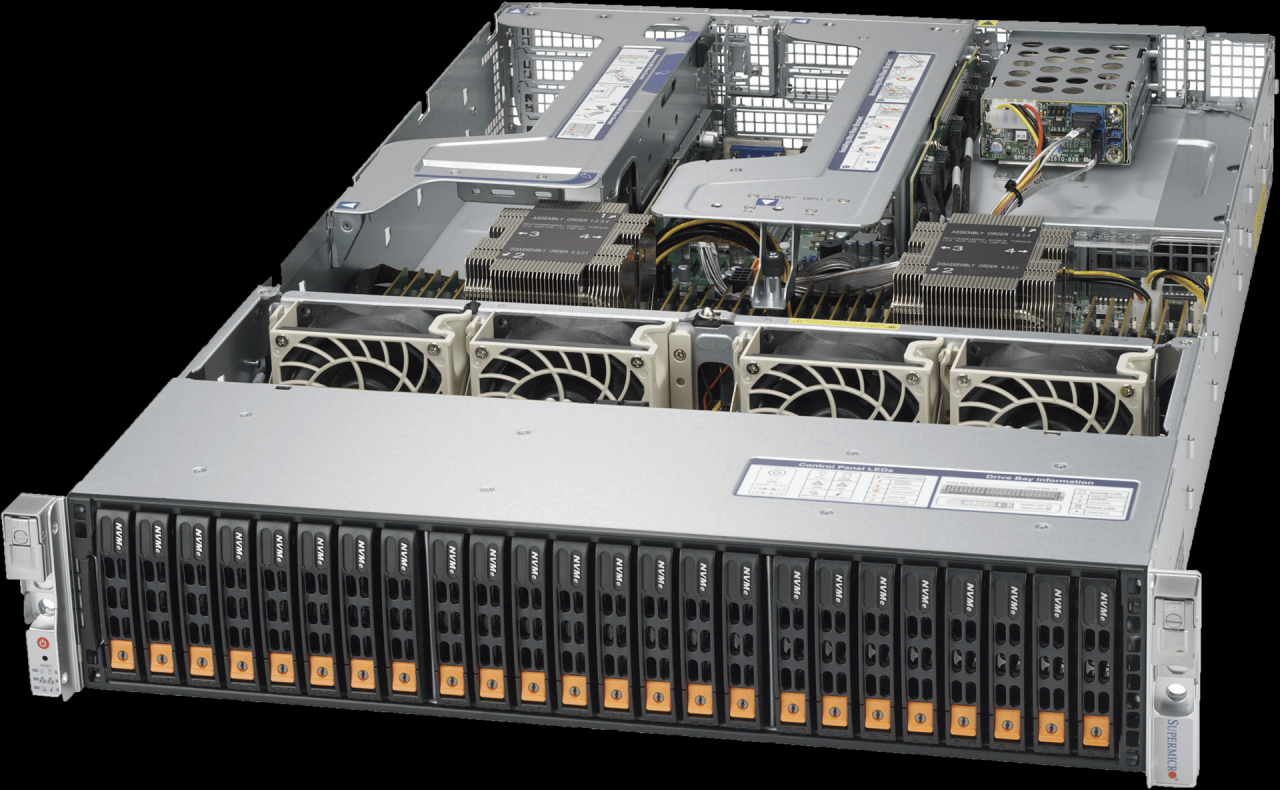
Supermicro is a leading provider of high-performance computing (HPC) and enterprise-grade servers, known for its customizable and scalable solutions. The company has a long history of innovation, adapting to the ever-changing demands of the IT industry.
History and Evolution
Supermicro was founded in 1993, initially focusing on motherboard manufacturing. The company quickly expanded its product portfolio to include complete server systems, recognizing the growing need for reliable and powerful computing solutions. Over the years, Supermicro has consistently innovated, pioneering new technologies like server virtualization and energy-efficient designs. This focus on cutting-edge technologies and customer-centric approach has cemented Supermicro’s position as a major player in the server market.
Product Portfolio
Supermicro offers a wide range of server solutions, catering to diverse needs and budgets.
Server Types
- Rackmount Servers: Designed for high-density deployments in data centers, offering optimal space utilization and efficient cooling. These servers are ideal for applications requiring high performance and reliability.
- Tower Servers: Compact and versatile, suitable for small businesses and departments requiring standalone server solutions. They are often chosen for their ease of installation and maintenance.
- Blade Servers: Designed for high-density deployments in data centers, offering high performance and scalability. These servers are often used in cloud computing environments and high-performance computing clusters.
- Workstation Servers: Powerful servers optimized for demanding tasks such as graphic design, video editing, and scientific computing. They often feature high-end processors and specialized graphics cards.
Form Factors
- 1U: The smallest rackmount form factor, offering high density and space efficiency. Ideal for applications with high I/O requirements and limited space.
- 2U: A common rackmount form factor, offering a balance of density and expandability. Suitable for a wide range of applications, including databases and web servers.
- 4U: A larger rackmount form factor, offering ample space for expansion and high-capacity storage. Ideal for demanding applications like high-performance computing and data analytics.
Key Features
Supermicro servers are renowned for their advanced features, including:
- Scalability: Supermicro servers are designed to be scalable, allowing users to easily add or remove components to meet changing needs. This flexibility ensures optimal performance and cost-efficiency.
- Performance: Supermicro servers are powered by the latest Intel and AMD processors, providing exceptional computing power for demanding applications. They also offer high-speed memory and storage options, further enhancing performance.
- Reliability: Supermicro servers are built with high-quality components and rigorous testing, ensuring reliability and uptime. They offer features like redundant power supplies and hot-swappable drives for added resilience.
- Energy Efficiency: Supermicro servers are designed with energy efficiency in mind, reducing power consumption and operational costs. They incorporate features like power-saving modes and optimized cooling systems.
- Customization: Supermicro offers a wide range of customization options, allowing users to tailor servers to their specific needs. This includes choosing components, configuring the operating system, and adding specialized features.
Target Markets and Industry Focus
Supermicro servers are targeted towards a wide range of industries and applications, including:
- Data Centers: Supermicro servers are a popular choice for data centers, offering high performance, scalability, and reliability. They are used for a variety of applications, including web hosting, cloud computing, and data storage.
- Enterprise IT: Supermicro servers are used by businesses of all sizes for a wide range of applications, including enterprise resource planning (ERP), customer relationship management (CRM), and business intelligence.
- High-Performance Computing (HPC): Supermicro servers are used in high-performance computing clusters for demanding tasks like scientific research, financial modeling, and engineering simulations.
- Artificial Intelligence (AI): Supermicro servers are ideal for AI workloads, offering the processing power and scalability required for training and deploying AI models.
- Edge Computing: Supermicro servers are used in edge computing applications, where data needs to be processed closer to the source. They are often used for industrial automation, retail analytics, and smart city initiatives.
Supermicro Server Architecture
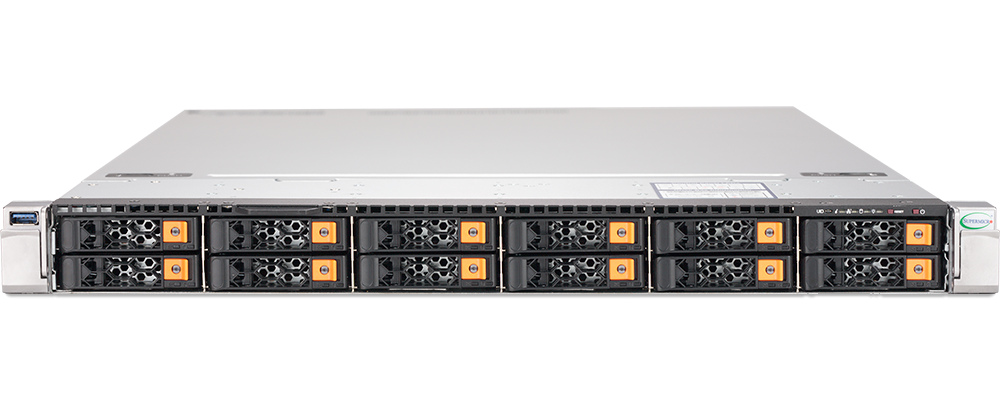
Supermicro servers are known for their flexible and customizable architecture, catering to a wide range of computing needs. Their design prioritizes efficiency, scalability, and reliability, making them suitable for various applications, from small businesses to large enterprises. This section delves into the key components of a Supermicro server, highlighting its unique features and how it compares to other major server manufacturers.
Processor
Supermicro servers offer a wide selection of processors from Intel and AMD, allowing for customization based on specific performance requirements. These processors are chosen for their high performance and efficiency, supporting various workloads, from general-purpose computing to demanding applications like AI and machine learning. For example, the Supermicro SuperServer SYS-5019A-TNRT supports Intel Xeon Scalable processors, providing high-performance computing for demanding applications.
Memory
Supermicro servers offer a variety of memory options, including DDR4 and DDR5, with support for high memory capacities. This allows for efficient handling of large datasets and demanding applications requiring significant memory resources. The Supermicro SuperServer SYS-5019A-TNRT, for instance, supports up to 3 TB of DDR5 memory, providing ample capacity for memory-intensive applications.
Storage
Supermicro servers offer diverse storage options, including HDD, SSD, and NVMe, catering to different performance and budget needs. They also support various storage configurations, such as RAID, allowing for data redundancy and performance optimization. The Supermicro SuperServer SYS-5019A-TNRT offers support for multiple NVMe drives, providing high-speed storage for demanding applications.
Networking
Supermicro servers provide flexible networking options, including onboard and add-in cards, supporting various network protocols and speeds. This allows for seamless integration with different network environments and enables high-bandwidth connectivity for data-intensive applications. The Supermicro SuperServer SYS-5019A-TNRT offers a range of network options, including 10/25GbE and 40GbE, enabling high-speed network connectivity for demanding applications.
Supermicro’s Server Design Approach
Supermicro prioritizes energy efficiency and scalability in its server design. They employ technologies like power-saving features and optimized cooling solutions to reduce energy consumption and operational costs. The modular design allows for easy expansion and upgrades, ensuring the server can adapt to evolving needs.
Comparison with Other Server Manufacturers
Supermicro stands out in the server market for its focus on customization and flexibility. Compared to other major server manufacturers, Supermicro offers a wider range of components and configurations, allowing users to tailor servers to their specific needs. This approach enables them to provide servers optimized for various applications and budgets, catering to a wider range of users.
Supermicro Server Features and Benefits
Supermicro servers are renowned for their exceptional performance, reliability, and security features. These attributes make them ideal choices for various applications and industries, offering significant benefits in terms of efficiency, scalability, and cost-effectiveness.
High Performance
Supermicro servers are designed to deliver exceptional performance across a wide range of workloads. This is achieved through the use of high-performance components, including:
- Powerful Processors: Supermicro servers utilize the latest Intel and AMD processors, offering high clock speeds, multiple cores, and large caches for demanding applications.
- High-Speed Memory: They support high-bandwidth DDR5 memory, enabling rapid data access and reducing latency.
- High-Performance Storage: Supermicro servers provide a variety of storage options, including NVMe SSDs and SAS drives, offering fast data transfer speeds and high I/O performance.
- Advanced Networking: Supermicro servers support high-speed network interfaces, such as 100GbE and 40GbE, enabling high-throughput data transfer and low network latency.
These features enable Supermicro servers to handle demanding workloads, such as high-performance computing, data analytics, and cloud computing.
Reliability
Supermicro servers are designed with reliability in mind, featuring robust components and advanced features to ensure uptime and data integrity.
- Redundant Power Supplies: Many Supermicro servers offer redundant power supplies, ensuring continuous operation even if one power supply fails.
- Redundant Fans: Supermicro servers often have multiple fans, providing redundancy for cooling and preventing system failure due to fan malfunction.
- Advanced Error Correction: Supermicro servers utilize advanced error correction codes (ECC) in memory, detecting and correcting data errors to maintain data integrity.
- Comprehensive Monitoring: Supermicro servers offer comprehensive monitoring tools that provide real-time insights into system health and performance, enabling proactive maintenance and troubleshooting.
Security
Supermicro servers prioritize security to protect sensitive data and ensure system integrity.
- Secure Boot: Supermicro servers support secure boot technology, ensuring that only trusted software and operating systems can be loaded, preventing unauthorized access and malware infections.
- Hardware-Based Security Features: Supermicro servers incorporate hardware-based security features, such as Trusted Platform Module (TPM), which provides cryptographic keys and secure storage for sensitive data.
- Secure Management Options: Supermicro servers offer secure management options, such as remote management interfaces with encryption and authentication, allowing for secure access and configuration.
Benefits of Using Supermicro Servers
Supermicro servers offer numerous benefits across various applications and industries:
- Enhanced Performance: Supermicro servers deliver high performance, enabling organizations to process large amounts of data, run complex applications, and achieve faster results.
- Improved Reliability: Supermicro servers’ reliability ensures continuous operation, minimizing downtime and maximizing productivity.
- Increased Security: Supermicro servers’ security features protect sensitive data from unauthorized access and cyber threats.
- Scalability and Flexibility: Supermicro servers are designed for scalability, allowing organizations to easily expand their infrastructure to meet growing demands.
- Cost-Effectiveness: Supermicro servers offer a balance of performance, reliability, and affordability, making them a cost-effective solution for various applications.
Real-World Use Cases, Supermicro server
Supermicro servers are widely used in various industries and applications, including:
- High-Performance Computing (HPC): Supermicro servers are used in HPC clusters for research, scientific simulations, and data analysis. Their high performance and scalability enable researchers to tackle complex problems and accelerate scientific discovery.
- Cloud Computing: Supermicro servers are deployed in cloud data centers, providing the foundation for cloud infrastructure and services. Their reliability, performance, and scalability make them ideal for cloud environments.
- Data Analytics: Supermicro servers are used for data analytics applications, processing and analyzing large datasets to extract insights and drive business decisions.
- Artificial Intelligence (AI): Supermicro servers are used in AI applications, such as machine learning and deep learning, providing the computational power required for training and deploying AI models.
- Financial Services: Supermicro servers are used in financial institutions for high-frequency trading, risk management, and fraud detection. Their performance, reliability, and security are essential for these critical applications.
Supermicro Server Applications
Supermicro servers are versatile machines designed to handle a wide range of computing workloads, making them suitable for various applications across diverse industries. These servers cater to the specific needs of businesses and organizations, from small startups to large enterprises.
High-Performance Computing (HPC)
Supermicro servers are widely used in high-performance computing (HPC) environments due to their ability to handle complex calculations and simulations. HPC applications require powerful computing resources, and Supermicro servers offer high-performance processors, large memory capacities, and high-speed interconnects to meet these demands.
- Scientific Research: Supermicro servers are essential for scientific research, enabling researchers to run simulations and analyze vast amounts of data. For instance, in drug discovery, these servers can simulate molecular interactions, helping researchers develop new medications.
- Financial Modeling: Financial institutions rely on Supermicro servers for complex financial modeling and risk analysis. These servers can process large datasets and perform sophisticated calculations to help financial institutions make informed decisions.
- Engineering and Design: Supermicro servers are crucial in engineering and design, facilitating simulations and rendering of complex products. For example, automotive companies use Supermicro servers to simulate crash tests and optimize vehicle designs.
Data Centers
Supermicro servers are the backbone of modern data centers, providing the infrastructure for storing and processing vast amounts of data. Data centers require servers that are reliable, scalable, and energy-efficient. Supermicro servers excel in these areas, offering a range of solutions tailored to different data center needs.
- Cloud Computing: Supermicro servers are essential for cloud computing platforms, providing the infrastructure for cloud services such as storage, computing, and networking. Companies like Amazon Web Services (AWS) and Microsoft Azure use Supermicro servers to power their cloud services.
- Web Hosting: Supermicro servers are widely used in web hosting environments, providing the infrastructure for websites and applications. Web hosting providers utilize Supermicro servers to ensure high availability and performance for their clients’ websites.
- Big Data Analytics: Supermicro servers play a crucial role in big data analytics, enabling businesses to analyze massive datasets and gain insights. These servers provide the computing power necessary for processing and analyzing large volumes of data.
Cloud Computing
Supermicro servers are integral to cloud computing, providing the infrastructure for cloud services. Cloud computing enables businesses to access computing resources on demand, without the need for significant upfront investments. Supermicro servers offer scalability, flexibility, and cost-effectiveness, making them ideal for cloud environments.
- Software-as-a-Service (SaaS): Supermicro servers power SaaS applications, providing the infrastructure for software delivered over the internet. Examples include cloud-based email services, productivity suites, and customer relationship management (CRM) systems.
- Platform-as-a-Service (PaaS): Supermicro servers are used in PaaS environments, providing the platform for developers to build and deploy applications. These servers offer a range of services, including databases, web servers, and programming languages.
- Infrastructure-as-a-Service (IaaS): Supermicro servers are the foundation of IaaS, providing virtualized computing resources, such as servers, storage, and networking, to users. Businesses can access these resources on demand, paying only for what they use.
Industry-Specific Applications
Supermicro servers are deployed in various industries, addressing specific needs and challenges.
- Finance: Supermicro servers are used in financial institutions for high-frequency trading, risk management, and fraud detection. These servers can handle massive amounts of data and perform complex calculations in real-time.
- Healthcare: Supermicro servers are essential for healthcare organizations, supporting medical imaging, electronic health records (EHRs), and genomic analysis. These servers provide the computing power needed to process and analyze large volumes of medical data.
- Manufacturing: Supermicro servers are used in manufacturing for product design, simulation, and production optimization. These servers can handle complex simulations and analyze real-time data from production lines to improve efficiency and quality.
Future Trends and Applications
Supermicro servers are constantly evolving to meet the demands of the ever-changing technology landscape.
- Artificial Intelligence (AI): Supermicro servers are crucial for AI applications, providing the computing power needed for training and running AI models. As AI continues to grow, Supermicro servers will play a critical role in supporting AI-powered applications.
- Edge Computing: Supermicro servers are increasingly being deployed at the edge of networks, closer to data sources. This enables real-time processing and analysis of data, reducing latency and improving performance for applications like autonomous vehicles and smart cities.
- Quantum Computing: Supermicro servers are expected to play a role in supporting quantum computing, which has the potential to revolutionize various industries. Supermicro servers will provide the infrastructure for quantum computing applications, such as drug discovery and materials science.
Supermicro Server Competitors
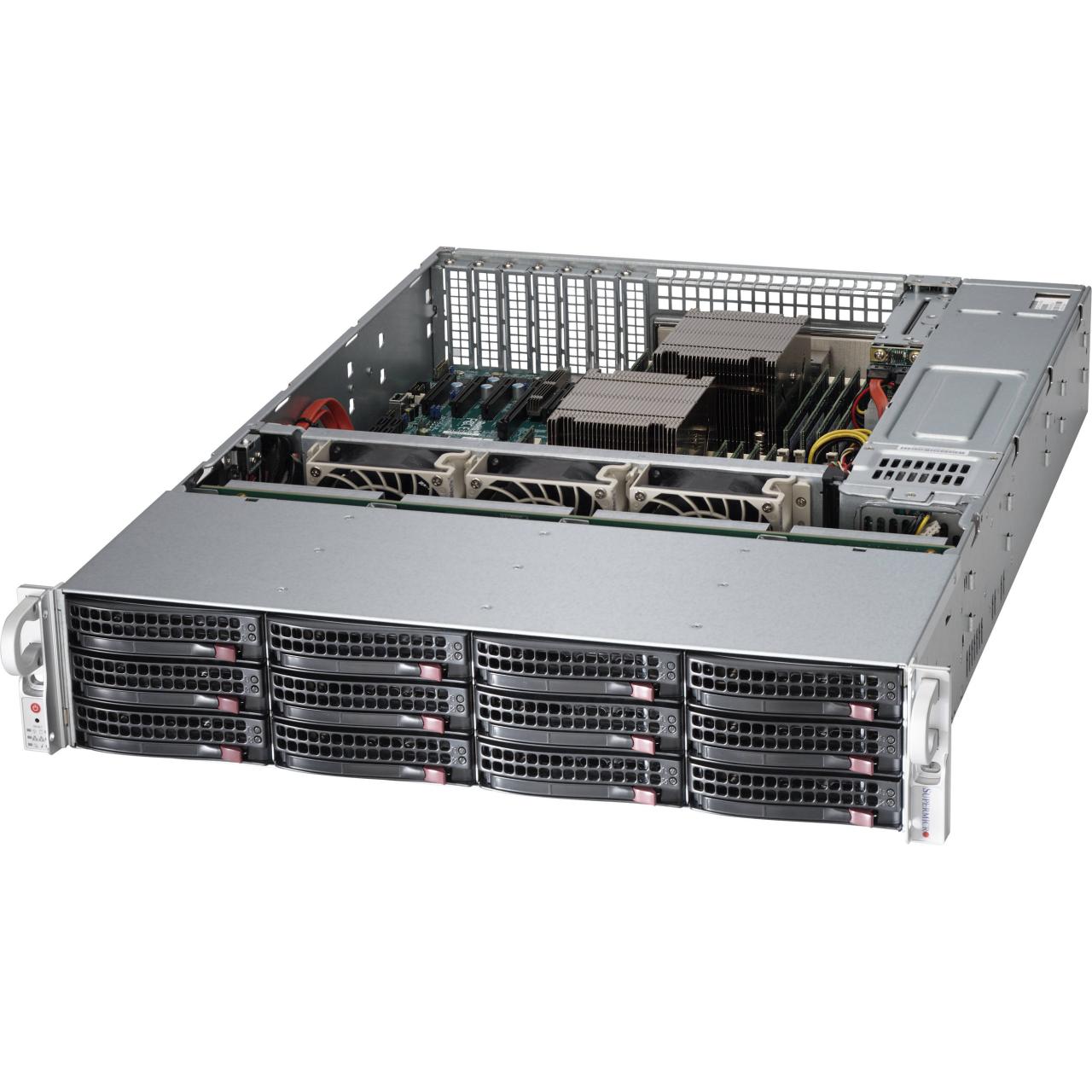
Supermicro operates in a highly competitive server market, where it faces stiff competition from established players like Dell, HP, Lenovo, and Cisco. Understanding the competitive landscape and Supermicro’s positioning within it is crucial for comprehending its market share, strengths, and potential growth opportunities.
Supermicro’s Main Competitors
Supermicro’s primary competitors in the server market are Dell, HP, Lenovo, and Cisco. These companies dominate the server market, with a significant share in various segments.
- Dell: A leading provider of servers, storage, and networking solutions, Dell is known for its broad product portfolio, strong customer support, and extensive global reach. Dell’s focus on enterprise solutions and its strategic acquisitions have solidified its position as a major player in the server market.
- HP: Another prominent player in the server market, HP offers a comprehensive range of servers, storage, and networking solutions. HP is renowned for its innovation, particularly in areas like blade servers and high-performance computing. HP’s strong brand recognition and global presence contribute to its competitive advantage.
- Lenovo: Lenovo, a global technology company, has emerged as a significant player in the server market through its acquisition of IBM’s server business. Lenovo focuses on delivering cost-effective and reliable servers, particularly in the enterprise and cloud computing sectors.
- Cisco: Primarily known for its networking solutions, Cisco has expanded its presence in the server market with its UCS (Unified Computing System). Cisco’s UCS platform combines servers, storage, and networking into a unified solution, offering benefits such as simplified management and increased efficiency.
Competitive Landscape and Market Share
The server market is characterized by intense competition, with major players vying for market share in various segments.
- Enterprise Servers: This segment is dominated by Dell, HP, and Lenovo, which offer a wide range of servers tailored for enterprise workloads. Supermicro competes in this segment by providing customized solutions and focusing on niche markets like high-performance computing and edge computing.
- Cloud Servers: The cloud server market is growing rapidly, driven by the increasing adoption of cloud computing. Supermicro competes in this segment by offering servers optimized for cloud workloads, such as high-density servers and servers with advanced networking capabilities.
- Workstation Servers: Supermicro offers workstations and servers tailored for demanding applications like graphics rendering, video editing, and scientific research. This segment is also competitive, with players like Dell, HP, and Lenovo offering similar products.
Supermicro’s Differentiators and Strengths
Despite the intense competition, Supermicro has carved a niche for itself in the server market by focusing on its strengths:
- Customization and Flexibility: Supermicro offers a high degree of customization, allowing customers to configure servers according to their specific requirements. This flexibility is particularly valuable for businesses with unique needs or demanding workloads.
- Energy Efficiency: Supermicro emphasizes energy efficiency in its server designs, offering solutions that reduce power consumption and operating costs. This focus on sustainability is increasingly important for businesses seeking to minimize their environmental impact.
- Cost-Effectiveness: Supermicro’s servers are often priced competitively, making them an attractive option for businesses with budget constraints. Supermicro’s focus on cost-effectiveness extends to its supply chain and manufacturing processes.
- Innovation: Supermicro continuously invests in research and development, introducing innovative technologies and solutions. This focus on innovation helps Supermicro stay ahead of the competition and address evolving customer needs.
Supermicro Server Case Studies
Supermicro servers have been deployed in a wide range of industries, demonstrating their versatility and performance capabilities. These case studies highlight successful implementations across various sectors, showcasing the impact of Supermicro servers on businesses and organizations.
Supermicro Server Case Studies
These case studies demonstrate the diverse applications of Supermicro servers and their ability to meet the specific requirements of different industries.
| Company | Industry | Application | Key Results |
|---|---|---|---|
| Amazon Web Services (AWS) | Cloud Computing | Data Center Infrastructure | Increased server density, reduced power consumption, and improved performance for cloud services. |
| NVIDIA | Artificial Intelligence | High-Performance Computing (HPC) | Accelerated AI model training and inference, enabling breakthroughs in areas like autonomous driving and medical imaging. |
| Ford Motor Company | Automotive | Connected Vehicle Development | Enabled rapid prototyping and testing of connected vehicle features, accelerating time-to-market for innovative automotive technologies. |
| University of California, San Diego | Research and Education | Scientific Computing | Supported complex simulations and data analysis in fields like genomics, astrophysics, and climate modeling. |
Supermicro Server Resources and Documentation
Supermicro offers a comprehensive range of resources and documentation to support users in maximizing the performance and efficiency of their servers. These resources provide valuable insights into the server’s architecture, features, and best practices for optimal utilization.
Technical Documentation
Supermicro provides a comprehensive library of technical documentation that covers various aspects of their server solutions. This documentation serves as a valuable resource for understanding server specifications, configuration, troubleshooting, and maintenance.
- User Manuals: Detailed user manuals are available for each Supermicro server model, providing step-by-step instructions for installation, configuration, and operation. These manuals cover hardware components, software installation, BIOS settings, and troubleshooting guides.
- Technical Specifications: Supermicro offers detailed technical specifications for each server model, outlining hardware components, performance metrics, supported operating systems, and compatibility information.
- White Papers: Supermicro publishes white papers that delve into specific technical aspects of their server solutions, such as performance optimization, energy efficiency, and security best practices. These papers provide in-depth analysis and insights into industry trends and advancements.
Online Resources
Supermicro provides a user-friendly online platform that centralizes access to various resources and support services.
- Official Website: Supermicro’s official website serves as a central hub for product information, news, events, and support resources. The website provides detailed product specifications, case studies, and contact information.
- Knowledge Base: Supermicro’s knowledge base offers a vast collection of articles, FAQs, and troubleshooting guides that address common issues and provide solutions. Users can search for specific topics or browse through categorized articles to find relevant information.
- Support Forums: Supermicro provides online forums where users can connect with other Supermicro users and experts to discuss technical issues, share experiences, and seek assistance. These forums offer a collaborative environment for problem-solving and knowledge sharing.
Software and Tools
Supermicro offers various software tools and utilities to simplify server management and enhance performance.
- Supermicro Management Suite (SMS): SMS is a comprehensive management platform that provides remote monitoring, control, and management capabilities for Supermicro servers. SMS allows users to monitor system health, manage power consumption, update firmware, and perform other administrative tasks remotely.
- Supermicro IPMI (Intelligent Platform Management Interface): IPMI is a standard interface that enables remote management of server hardware. Supermicro’s IPMI implementation provides out-of-band management capabilities, allowing users to access the server even when the operating system is not running.
Supermicro Server Future Trends
Supermicro servers are at the forefront of technological advancement, constantly evolving to meet the demands of an increasingly digital world. The future of Supermicro servers will be shaped by emerging trends and technologies that are transforming the way we compute, connect, and interact with data. This section explores some of the key trends that will drive innovation and influence Supermicro’s product development and market strategy.
Artificial Intelligence
Artificial intelligence (AI) is rapidly transforming various industries, from healthcare and finance to manufacturing and transportation. The increasing use of AI applications requires powerful computing infrastructure capable of handling complex algorithms and massive datasets. Supermicro servers are well-positioned to meet these demands, offering high-performance computing capabilities, optimized for AI workloads.
Supermicro servers are equipped with advanced features such as:
- High-speed interconnects: Supermicro servers utilize high-speed interconnects like PCIe Gen5 and NVLink to enable fast data transfer between processors, GPUs, and other components, essential for AI workloads.
- Optimized memory configurations: Supermicro servers offer large memory capacities and advanced memory technologies like DDR5, crucial for AI models that require significant memory resources.
- GPU acceleration: Supermicro servers support a wide range of GPUs, including NVIDIA and AMD, which accelerate AI training and inference tasks, significantly improving performance.
Supermicro’s commitment to AI-optimized hardware and software solutions positions the company as a leading provider of infrastructure for the growing AI market.
End of Discussion
Supermicro servers continue to push the boundaries of what’s possible in computing, offering solutions that are tailored to meet the evolving demands of today’s digital world. From high-performance computing to cloud infrastructure, Supermicro provides the foundation for a future where data is processed faster, applications are more scalable, and businesses can thrive in an increasingly interconnected landscape.
Supermicro servers are known for their reliability and performance, making them ideal for demanding workloads. While they might not be as cuddly as a pallet dog house , they are equally impressive in their own right. With their robust design and powerful processing capabilities, Supermicro servers can handle even the most complex tasks with ease.

